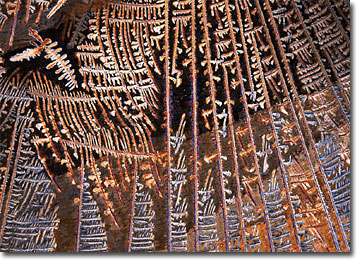Polarized Light Microscopy Digital Image Gallery
Malathion
Malathion is the trade name of an organophosphate insecticide used for both domestic and commercial applications. Introduced in 1950, the substance, which is believed to be significantly less toxic to humans than parathion and many other similar compounds, was one of the first insecticides of its kind ever developed and is one of the most heavily utilized.

Commercially, malathion is often applied to crops to combat the many sucking and chewing insects that may harm them, and is often utilized for the same purpose in home gardens. The organophosphate is frequently used in large efforts at mosquito control for public health as well, and in smaller quantities for the control of fleas, lice, cockroaches, and similar household pests. Application of the insecticide may be carried through a variety of means, such as a duster, fogger, spray can, shovel, or spreader, depending on the size and nature of the job.
Though considered to be only a slightly toxic class III compound by the Environmental Protection Agency (EPA), malathion must be used with caution. The substance is rapidly absorbed by the human body via almost all possible entry routes and, as a cholinesterase inhibitor, may overstimulate the nervous system. Symptoms of excessive exposure may include dizziness, headache, nausea, confusion, and in severe cases, respiratory failure, convulsions, and death. Malathion has long been considered, however, one of the safest organophosphate insecticides produced, and is not believed to bioaccumulate in the environment.
